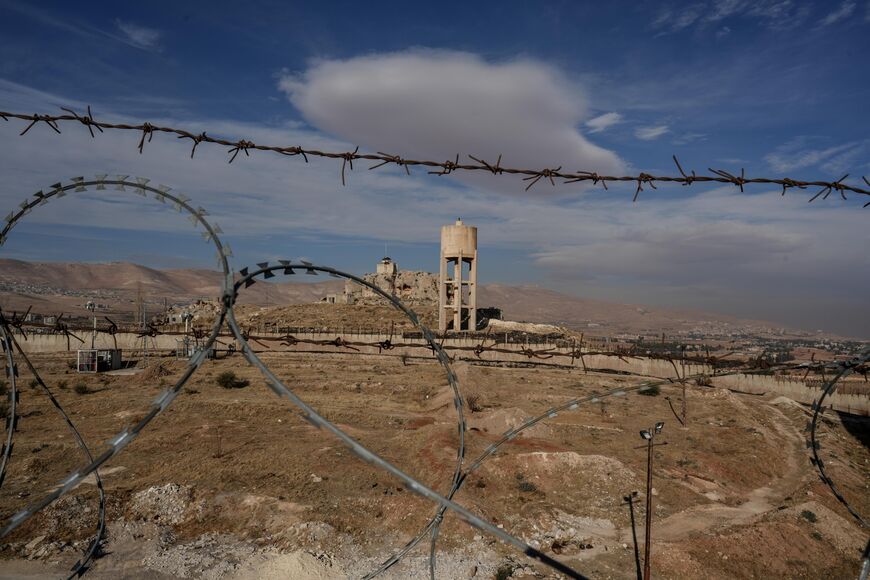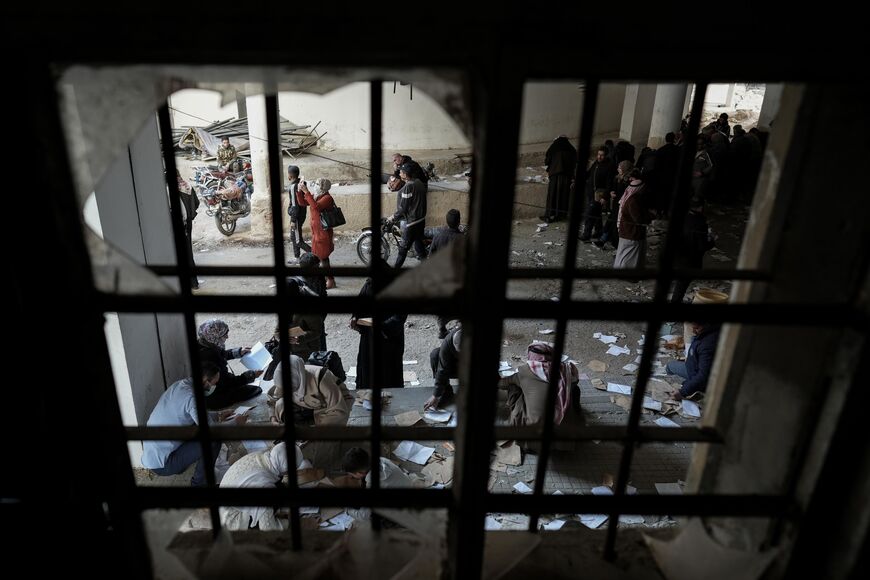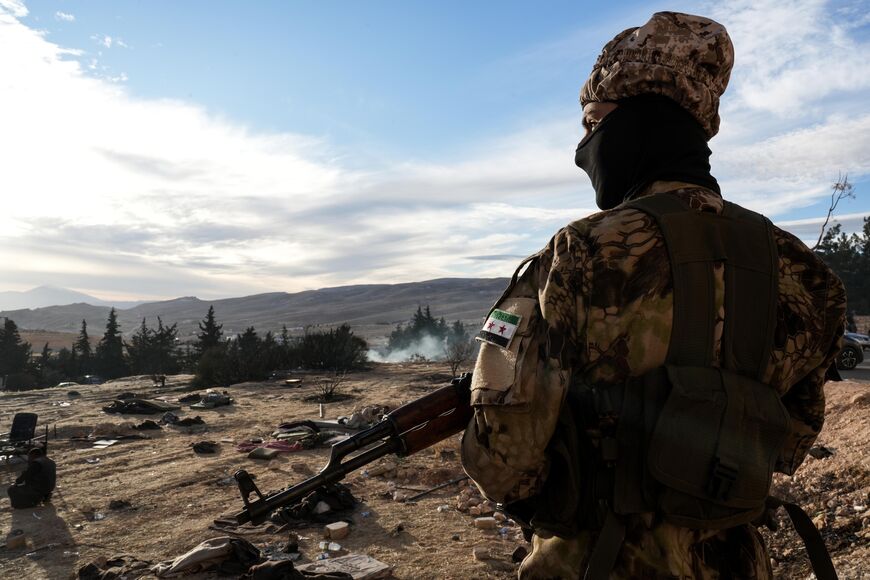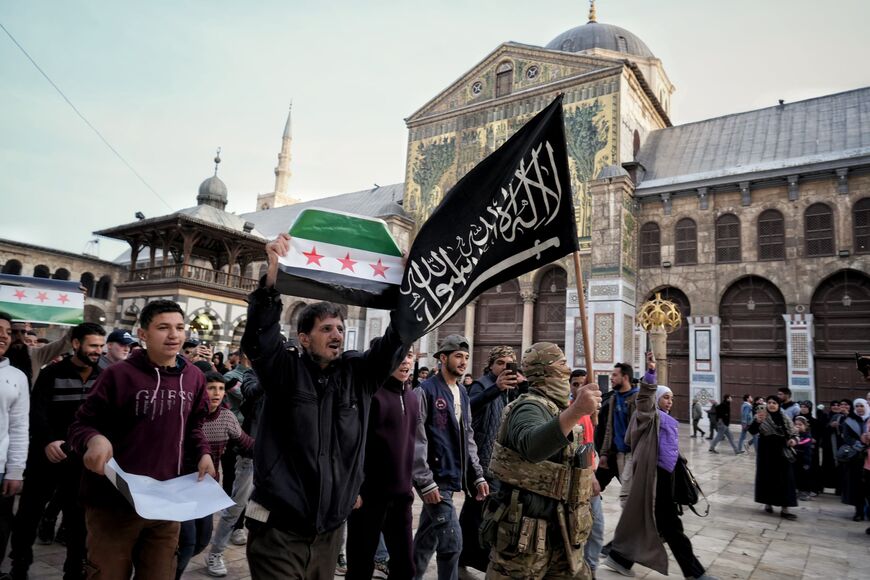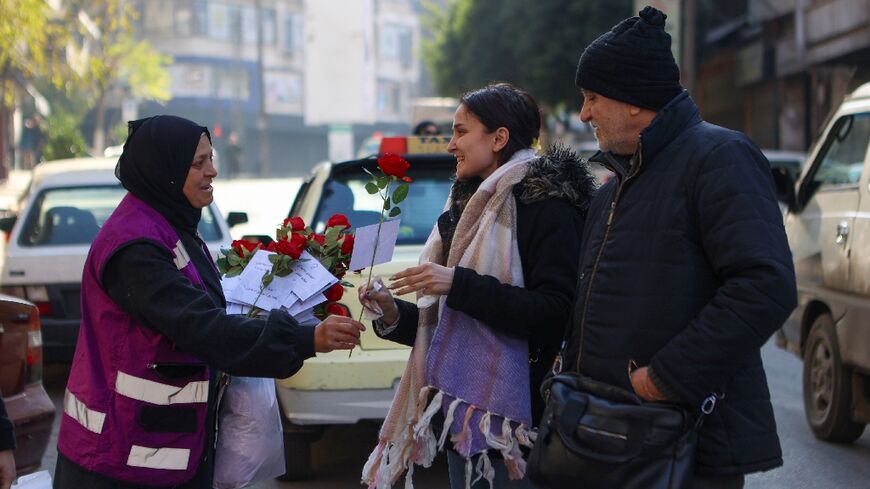Dispatch from Damascus: Syrians celebrate end of Assad reign in shadow of atrocities
From horror to hope, Syrians are embracing a new political order as they turn the page on the Assad dynasty and grieve the ones they lost in atrocities by the toppled regime.

DAMASCUS — As Syrians flood the streets to celebrate a turning point in their nation’s history, their emotions are a mix of joy and sorrow. The jubilance of newfound freedom is tempered by the haunting memories of Assad's prisons and detention centers, casting a shadow over the festivities. There is also a sense of uncertainty on what could come next, but many are cautiously optimistic over the relatively peaceful transition of power in the last two weeks.
Aside from a fortunate few, many who disappeared into the regime’s prison system have yet to return. Meanwhile, the charred bodies of those executed in the regime's final days have begun arriving at Damascus hospitals, forcing Damascenes to confront the horrors of Assad’s concentration camps.
Among the survivors is 28-year-old Muhammad Shelleh from the Damascus countryside. Held in the notorious Sednaya prison for six years between 2018 and 2024, he considers his survival nothing short of miraculous. Speaking to Al-Monitor, he recounted his ordeal:
“I am from Harasta, and my crime was escaping from the regime army. Damascus was a huge open-air prison — they would take anyone from the streets for anything. The security forces often had quotas to fill.”
Shelleh described the horrors of Sednaya, the Syrian regime’s most notorious prison. “I was taken at a checkpoint. When we were sent to Sednaya, we knew instantly it was a termination center. We had to cover our faces, walk chained and endure beatings for any movement. The initiation there is infamous.”
He paused before continuing. “Six hundred strikes with cables on my feet — my skin opened, blood poured and the guards kept beating me. They stripped us, poured soapy water into our cells and laughed as we slipped and slid.”
He went on, “We were given little to no food. You get used to the beatings, but the starvation kills you. One egg for three people — that’s all we had. Anytime a guard entered, 20 or 30 of us would rush into the small toilet to hide.”
Shelleh often thought he would never leave alive. He said, “Sednaya isn’t a place you escape. We’d hear someone had a court date, only to later learn they had met their maker. You don’t form just friendships there; we’re all family, and we’re likely to meet again in heaven soon.”
He added, “It’s a miracle I survived, but most didn’t. What happened inside is beyond description — it’s a place you couldn’t imagine could exist.”
Testimonies from Sednaya have revealed systemic torture and mass killings. The evidence of these atrocities lies in the bodies now being returned to families. At Damascus’ Mushtahed Hospital, staff have begun receiving corpses from the detention centers, among them that of activist Mazen al-Hamada.
Hospital staff photograph the scarred bodies and display the images at the entrance for families to identify their loved ones.
Alaa al-Qabouni, a 23-year-old medic volunteering at Mushtahed Hospital, described the scene. “People should come and see these bodies. They are burned, bruised and abused. This is something only monsters would do.”
He continued, “We’re dealing with injuries from stray gunfire, but the real devastation comes from the bodies arriving from the security branches. Tortured and brutalized — they’re not even human anymore. The world needs to see this.”
The hospital is overwhelmed by the volume of cases. Al-Qabouni added, “We desperately need medical supplies and more doctors. This is one of Syria’s largest hospitals, but with the regime gone, we must come together to address these needs.”
For many Syrians who have long kept silent about losing loved ones to the regime, a new sense of freedom has brought the chance to grieve openly.
Abdul Hadi Safi, a Syrian influencer, shared his story with Al-Monitor. “My brother was taken in front of my eyes when I was young. We didn’t know who took him. As I grew older, I discovered it was our regime. They took him and my uncle at a checkpoint — no reason, no weapons, no drugs. My brother was 16, my uncle 50. We searched for three years, but in the end, we received a death certificate. I became an only child.”
Triumphant mood in Damascus
Despite the pain, the streets of Damascus are filled with hope and pride.
Syrian content creator Naya Zowa reflected on the moment. “As a new chapter unfolds in Syria’s rich history, I hope for stability, peace and security free from injustice, bloodshed and conflict. It’s crucial to preserve Syria’s unity and sovereignty, ensuring it doesn’t become a battleground for international disputes.”
She added, “We must also improve living conditions and facilitate the safe return of refugees, who will play a vital role in rebuilding the nation.”
Unity has emerged as a defining feature. Sharief Homsi, the creator of Syria’s popular stand-up comedy show "Styria," captured the mood: “There’s a feeling even greater than fear that we’re seeing in people — a shared sense of purpose. I’ve never felt anything like this.”
He concluded, “I hope this country becomes a place where we can create art and truly express ourselves. People are still scared, but I see something positive on the horizon.”
In Damascus, a sense of freedom is palpable, though the scars of atrocities remain visible. Joy and relief mix with deep sorrow for those who suffered or perished, paving the way for this moment of change.




